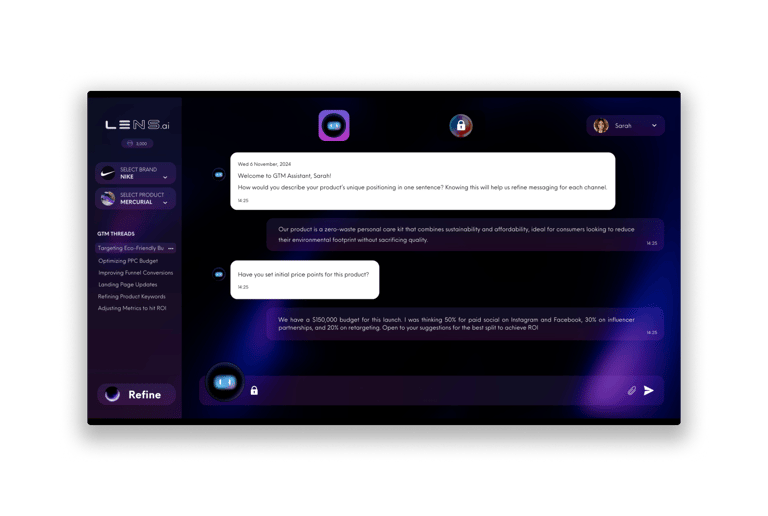

AI-driven marketing & project roadmap platform
L3NS.ai
Project
Info
Role
UX Researcher
Product Designer
Timeline
September 2024 - January 2025
Tools
Figma
Team
Weronika Ługowska
Devran Simsek
Kamil Dogan
In the Fall of 2024, I was contracted by Sincapp Tech to help with initial research & design strategies for a marketing management tool called L3NS (LENS). I've worked with one other designer and an engineering team to deliver the MVP. I've learned a lot about product strategy, developer hand off, design systems and design precision. You can checkout L3NS here.
Overview
As a truly innovative product with no direct competitors, we needed to define the project scope and decide on primary features. Client wanted to see an interactive prototype to evaluate the product premise and lure potential investors and testers.
We conducted a comprehensive discovery phase to understand the client's vision and project requirements. We've built a design system and delivered a high-fidelity prototype, which was then turned into an MVP ready for testing.
Problem
Outcome
End result
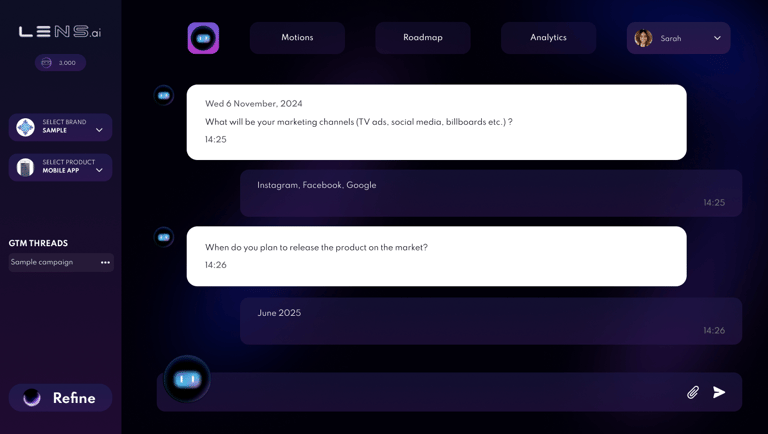

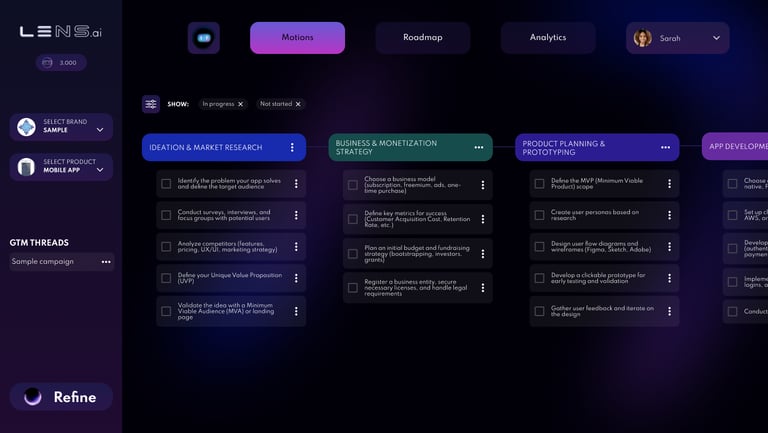

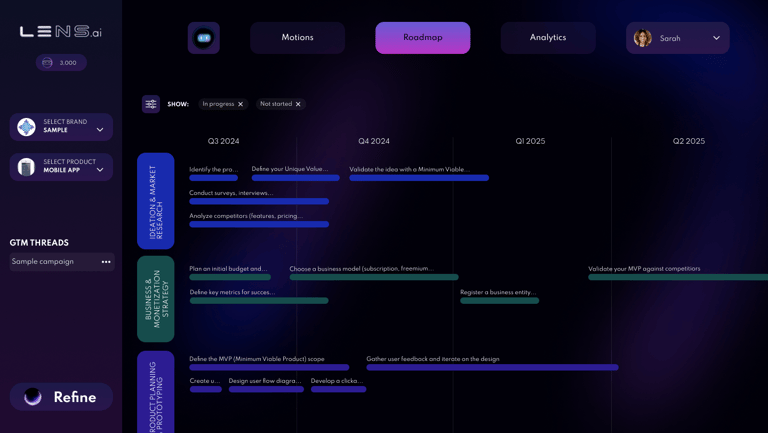

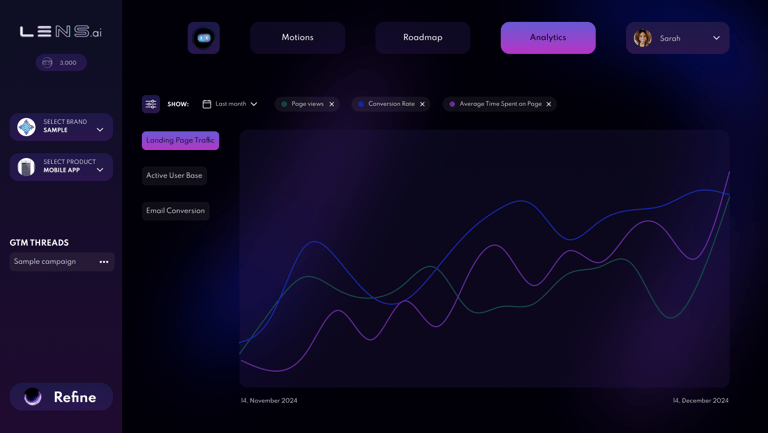

Exploring the idea
Project scope
As a truly innovative product with no direct competitors, defining the project scope was like navigating uncharted waters. Understanding the needs of a market that doesn't yet know it needs this solution was a significant challenge. Together with the client we defined the target audience: start-ups, small companies, including marketing agencies and freelancers.
AI integration and enhancement
Building an agnostic AI structure capable of learning and adapting from diverse marketing data was a complex endeavor. The team also had to combine company knowledge with rich external data to enhance the AI's ability to provide insightful marketing suggestions.
Design and development challenges
Main features
The tool should help users with setting out a complete marketing campaign and suggest ideas on promotion and growth. We focused on user-friendly chat assistant, roadmap builder and task management as the core selling points in the beginning.
Data collection
Orchestrating a secure and efficient flow of data from various third-party services, including Facebook, Google, TikTok, and Shopify.
Design process
Understanding the Product
1
client briefing, desk research, AI utilization, development discussions
2
Market research
competitors analysis, defining product strategy and business plan
3
User Research
online survey (concept and needs testing), task analysis, 5 interviews with start-up founders and marketing professionals
4
Ideation
redefining value proposition, exploring possibilities, mapping user flows & wireframes, lo-fi prototypes
5
Iteration & collaboration
building a design system, participatory design with the client and few testers, design iterations, AI implementation challenges
6
Final tests
usability tests, hypothesis verification, tree testing, design improvements, MVP delivery
User Research
During surveys and interviews we wanted to discover needs and pain points of business owners and marketing professionals who manage product launches and promotion. Here are some of the questions we asked:
What are the biggest challenges you face when launching a new product?
Do you rely on generative AI in design and marketing?
How much time do you spend on planning and executing marketing campaigns?
How do you create content for your campaigns? What does the process look like?
Additionally, we ran a task analysis study with 3 interviewees where they demonstrated the tools and methods they were using currently, pinpointing advantages and downsides of each of them. They told us about:
How confident are you in AI making marketing-related decisions?
What tasks in your product planning and strategy do you find most repetitive or time-consuming?
Would you prefer an AI assistant that provides suggestions or one that fully automates decisions?
What aspects of campaign management do you wish could be automated?
Insights
Data from AI assistants generate a lot of text and the human project manager/product owner still needs to process it and craft the course of action, while handling project strategy documentation efficiently at the same time. It’s time-consuming and requires them to gather a lot of data. They need an automated tool, that plans the strategy and tasks for them (at least suggests it). They would appreciate the comfort of managing various marketing campaigns from one dashboard. Users want to see AI generate visualizations based on datasets.
Major Findings & Uncovered Insights
Initially we thought users would be interested more in generative AI possibilities to quickly build branding and content for their product’s social media. Survey results and interviews with startup owners proved that product launch strategy is the area where many pain points lie and nowadays they rely heavily on AI to scout the market in all project phases. We had to take a pivot and decided to deliver a service that streamlines and elevates product launches with minimal manual effort, hopefully including content creation in the process.
The need for automation
Redefining value proposition
Usability tests - first prototype
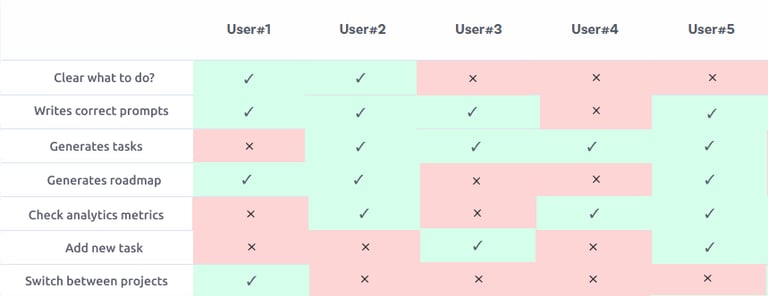

Working on solutions
Challenges and execution
Project multitasking
Monetization possibilities
Majority of testers expressed interest in paying for this platform, once AI assistant is stable and more advanced. Users mentioned they would gladly see more features in L3NS, such as graphs and reports visualization, automated report delivery, performance tracking or curated content generation . Me and Weronika (UX designer) prepared recommendations for the team, highlighting potential for paid subscriptions in the future.
How to show value
One of the complaints we got was that users had to provide a lot of data input in the beginning (a common obstacle with AI tools) , and at the same time didn't know what else the AI assistant could offer. We added a sample project that shows the roadmap + a few tasks and gives users a way to see how GTM Assistant operates.
Some testers expressed difficulty in switching between various campaigns, as it seemed the GTM Assistant continues the thread from a previous conversation. Additionally, the navigation did not allow jumping between projects and tasks quickly. Through tree testing sessions we found a better navigation alternative for our users. We adjusted the AI algorithm and updated the architecture to make switching between different product campaigns and chat threads a seamless experience.
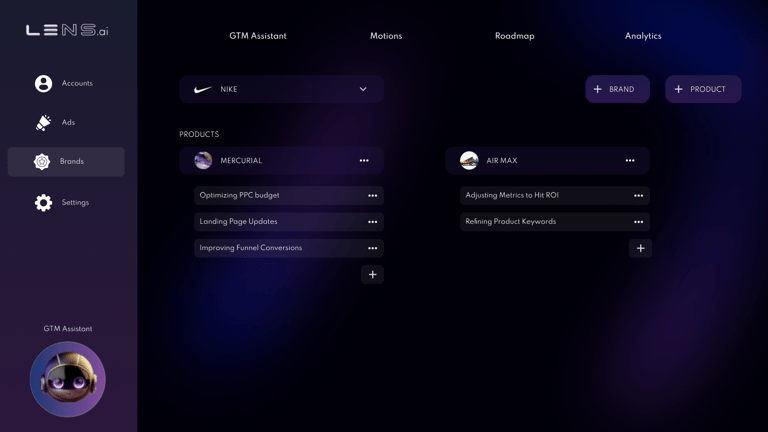

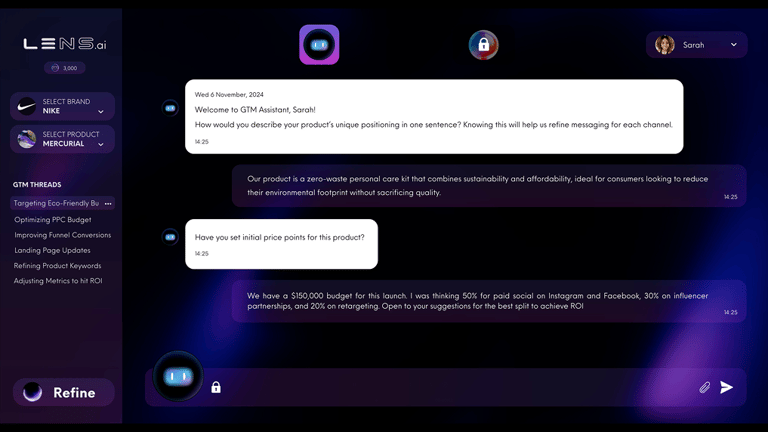

Brand and product selection moved to left-hand panel for quick access, with active GTM threads close at hand
Usability tests of the MVP (first round after platform update)
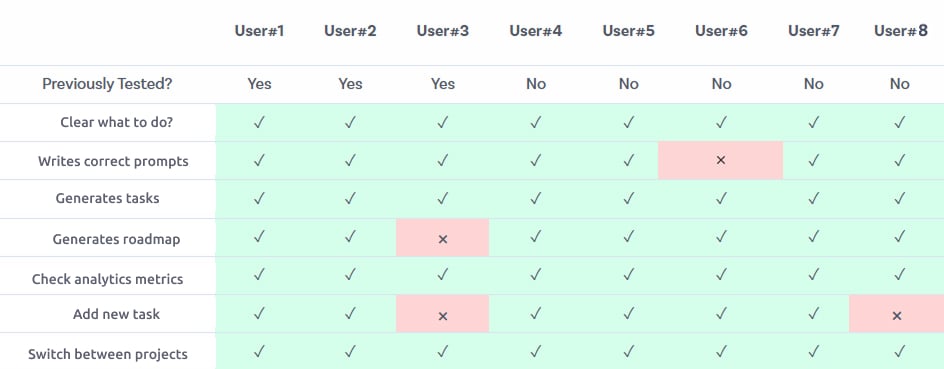

Previous version:
New version:
Results
01
Project outcomes
After five months of unwavering dedication and a high-tempo workload, we successfully delivered the MVP version of L3NS platform, and it's now in closed testing phase, ready to launch in Q2 2025. Ultimately, we divided the platform into two modules: the Growth Consultant Agent (L3NS) designed to handle strategy, and the Growth Task Agent (L3NS X) who handles the execution piece. This fusion of strategy and execution is ideal for teams needing high-quality, hands-free campaign management.
02
The users that went through the sample project were able to understand how to use L3NS and saw the value. Users who didn't go through the sample project were still able to figure it out on their own, but due to imperfect AI algorithm had doubts if they could use it rightaway. The interface was well-received in the alpha tests and users appreciated the platform's simplicity and focus on strategy planning.

